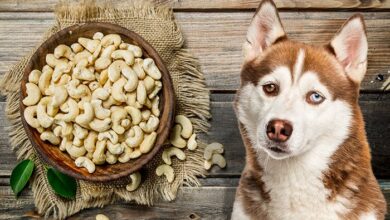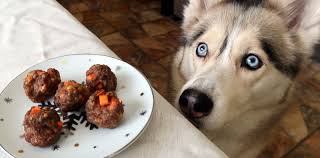
When it comes to sharing treats with our furry friends, it’s natural to wonder about the safety of some human snacks. One common question many dog owners ask is, “Can Dogs Eat Licorice?” While licorice might seem like a harmless sweet treat, it actually poses several hidden dangers to dogs. From toxic compounds to high sugar content, licorice can lead to serious health problems for your canine companion.
In this article, we’ll uncover 7 shocking dangers associated with licorice consumption in dogs, helping you understand why this popular candy is best kept far away from your pet’s bowl. Whether you’re a curious dog lover or a cautious pet parent, knowing these risks can protect your dog from unexpected harm and keep their tail wagging happily and healthily.
Can Dogs Eat Licorice? What Is Licorice?
If you’re a dog owner, you might have asked yourself, Can dogs eat licorice? Before sharing this sweet treat with your furry friend, it’s important to understand what licorice really is and why it might not be safe for dogs.
What Is Licorice?
Licorice comes in two main forms:
- Licorice Root: This is the natural root of the Glycyrrhiza glabra plant. It has a sweet flavor and has been used in traditional medicine for centuries. Licorice root contains a compound called glycyrrhizin, which is responsible for its distinctive taste and some of its effects on the body.
- Licorice Candy: This is the sweet treat you find in stores. Licorice candy often comes in two varieties:
- Black Licorice: Made using licorice root extract, black licorice contains glycyrrhizin.
- Red Licorice: Usually does not contain licorice root. Instead, it’s flavored with anise or other artificial flavors and is mostly sugary candy.
Understanding the difference between black licorice and red licorice candy is important because their ingredients affect dogs differently.
Why Does This Matter for Dogs?
While licorice root has some traditional uses in humans, the glycyrrhizin effects on dogs can be harmful. Black licorice contains this compound, which can cause licorice toxicity in dogs. Red licorice, though free of licorice root, often contains high sugar levels and sometimes dangerous sweeteners like xylitol in licorice candy, which is toxic to dogs.
In the next sections, we’ll explore why licorice can be risky for dogs and what signs to watch for if your dog accidentally eats it.
Can Dogs Eat Licorice? Why Licorice Is Dangerous for Dogs: The Role of Glycyrrhizin
If you’re a pet owner wondering, Can dogs eat licorice? it’s important to understand why licorice can be harmful to your furry friend. The main culprit behind the dangers is a compound called glycyrrhizin, found naturally in licorice root.
Let’s take a closer look at what glycyrrhizin is, how it affects dogs, and why licorice root poses serious health risks.
What Is Glycyrrhizin?
Glycyrrhizin is a natural chemical found in the root of the licorice plant (Glycyrrhiza glabra). It gives licorice its distinctive sweet flavor and has been used in traditional medicine for humans. However, this compound can be toxic to dogs.
When dogs consume licorice root or products containing it, glycyrrhizin enters their system and can disrupt normal bodily functions.
How Glycyrrhizin Affects Dogs
The glycyrrhizin toxicity in dogs mainly affects their adrenal glands and electrolyte balance, leading to:
- Elevated blood pressure: Glycyrrhizin causes the body to retain sodium and lose potassium, which raises blood pressure. This can strain the heart and blood vessels.
- Electrolyte imbalance: Loss of potassium can cause muscle weakness, fatigue, and even heart rhythm problems.
- Potassium loss: Low potassium levels affect muscle and nerve function, making your dog feel weak or lethargic.
These effects can be particularly dangerous for dogs with pre-existing health issues or smaller breeds, which are more sensitive to toxins.
Why Licorice Root Is Dangerous for Dogs
Because glycyrrhizin is concentrated in licorice root, any product containing licorice root extract—like black licorice candy—can cause licorice toxicity in dogs. Even small amounts can lead to symptoms such as:
- Vomiting
- Diarrhea
- Muscle tremors or weakness
- Increased thirst and urination
- Lethargy
If you notice any of these dog licorice poisoning symptoms, it’s important to contact your veterinarian immediately.
What About Licorice Candy?
Many licorice candies contain licorice root extract, but some, like red licorice, do not. However, candies often have xylitol in licorice, an artificial sweetener that is highly toxic to dogs. So, licorice candy can be dangerous for multiple reasons.
Safe Alternatives and Final Advice
Instead of risking licorice toxicity, choose safe dog treats like carrots, blueberries, or apple slices. Always check ingredient labels and avoid giving your dog any human candy or supplements containing licorice root.
If your dog accidentally eats licorice or licorice candy, watch for symptoms and seek veterinary care promptly.
Seven Shocking Dangers of Licorice for Dogs
If you’re a dog owner, you might be curious: Can dogs eat licorice? While licorice is a popular treat for people, it can pose serious risks to dogs. From natural compounds in licorice root to harmful additives in candy, licorice can be dangerous for your furry friend.
Let’s explore the seven shocking dangers of licorice for dogs so you can keep your pet safe and healthy.
1. Raised Blood Pressure and Heart Problems
Licorice root contains a compound called glycyrrhizin, which can cause raised blood pressure (hypertension) in dogs. This is especially risky for dogs with existing heart or kidney problems. High blood pressure strains the heart and blood vessels, potentially leading to serious complications.
2. Electrolyte Imbalance and Muscle Weakness
Glycyrrhizin also causes dogs to lose potassium, an important electrolyte. Low potassium levels can lead to:
- Muscle weakness
- Lethargy
- Tremors or difficulty walking
This electrolyte imbalance affects your dog’s overall energy and muscle function.
3. Toxicity from Artificial Sweeteners (Xylitol) in Licorice Candy
Many sugar-free licorice candies contain xylitol, an artificial sweetener that is deadly to dogs. Even a small amount of xylitol can cause:
- Rapid drop in blood sugar
- Seizures
- Liver failure
Always check candy labels carefully and never give your dog anything containing xylitol.
4. High Sugar Content Leading to Obesity and Diabetes
Licorice candy is often loaded with sugar. Feeding sugary treats to your dog regularly can lead to:
- Weight gain and obesity
- Diabetes
- Dental problems
These health issues can shorten your dog’s lifespan and reduce their quality of life.
5. Gastrointestinal Upset: Vomiting and Diarrhea
Licorice candy can contain ingredients like wheat gluten and corn syrup, which may upset your dog’s sensitive stomach. Common symptoms include:
- Vomiting
- Diarrhea
- Stomach discomfort
If your dog shows these signs after eating licorice, contact your vet.
6. Water Retention and Potential Kidney Damage
Glycyrrhizin causes the body to retain water, which can put extra stress on your dog’s kidneys. Over time, this may contribute to kidney damage, especially in dogs with pre-existing kidney issues.
7. Risk of Allergic Reactions and Toxicity in Small Breeds
Small dogs are more vulnerable to the toxic effects of licorice, even in tiny amounts. They can experience:
- Severe poisoning symptoms
- Allergic reactions
- Faster onset of complications
Always keep licorice and licorice-flavored products out of reach of small dogs.
What to Do If Your Dog Eats Licorice
If your dog accidentally eats licorice or licorice candy, watch for dog licorice poisoning symptoms such as vomiting, diarrhea, weakness, or excessive thirst. Contact your veterinarian immediately for advice.
Safe Dog Treat Alternatives
Instead of licorice, choose safe dog treats like:
- Carrots
- Blueberries
- Apple slices (without seeds)
- Plain cooked pumpkin
These treats are healthy, tasty, and safe for your dog.
So, can dogs eat licorice? The answer is a clear no. Licorice poses many hidden dangers, from glycyrrhizin effects on dogs to the deadly risk of xylitol in licorice candy.
Symptoms to Watch For If Your Dog Eats Licorice
If you’re wondering, Can dogs eat licorice? the answer is a clear no. Licorice contains compounds that can be harmful to dogs, and it’s important to know the signs of trouble if your dog accidentally eats some. Recognizing licorice poisoning symptoms in dogs early can make all the difference.
In this article, we’ll cover the common dog licorice toxicity signs you should watch for and explain why you should contact your vet immediately if you notice any symptoms.
Why Is Licorice Dangerous for Dogs?
Licorice root contains a compound called glycyrrhizin, which can cause licorice toxicity in dogs. Many licorice candies also contain xylitol, a sweetener that is extremely toxic to dogs. Both can lead to serious health issues.
Common Symptoms of Licorice Poisoning in Dogs
If your dog eats licorice, watch for these signs:
- Vomiting
- Diarrhea
- Excessive drooling
- Lethargy or unusual tiredness
- Muscle weakness or tremors
- Increased thirst and urination
- Raised blood pressure symptoms (may include restlessness or rapid breathing)
These symptoms can appear within a few hours and may worsen quickly.
When to Contact Your Veterinarian
If you see any of the above symptoms or know your dog has eaten licorice or licorice candy, contact your vet immediately. Early treatment can prevent serious complications and improve your dog’s chances of recovery.
What You Can Do While Waiting for Help
- Remove any remaining licorice or candy from your dog’s reach.
- Keep your dog calm and comfortable.
- Do not try to induce vomiting unless your vet tells you to.
Safe Dog Treat Alternatives
Instead of licorice, try these safe dog treats:
- Fresh blueberries
- Carrot sticks
- Apple slices (without seeds)
- Plain cooked pumpkin
These treats are healthy and tasty without the risks of licorice.
Can dogs eat licorice? No, licorice can be dangerous due to glycyrrhizin effects on dogs and the risk of xylitol in licorice candy. Knowing the dog licorice poisoning symptoms helps you protect your pet and act fast if needed.
What to Do If Your Dog Eats Licorice
If you’re asking, Can dogs eat licorice? The answer is no. Licorice can be harmful to dogs because of compounds like glycyrrhizin and dangerous additives such as xylitol. But accidents happen, and your dog might sneak a piece of licorice candy or root. Knowing what to do if your dog eats licorice can help you act quickly and keep your pet safe.
Here’s a simple, step-by-step guide on what to do if your dog consumes licorice.
Step 1: Check the Amount and Type of Licorice Consumed
- Try to find out how much licorice your dog ate.
- Identify the type of licorice: Was it black licorice (contains licorice root) or red licorice candy (often contains sugar and sometimes xylitol)?
- Look at the ingredient list if possible, especially for xylitol, which is highly toxic to dogs.
Knowing this information will help your veterinarian assess the risk and decide on the best treatment.
Step 2: Contact Your Veterinarian Immediately
- Call your vet or an emergency animal hospital right away.
- Provide details about the amount and type of licorice your dog ate.
- Describe any symptoms your dog may be showing, such as vomiting, diarrhea, lethargy, or muscle weakness.
Early veterinary advice is critical because licorice toxicity in dogs can worsen quickly, and xylitol poisoning requires urgent care.
Step 3: Monitor Your Dog Closely
- Keep a close eye on your dog for any dog licorice poisoning symptoms, including:
- Vomiting
- Diarrhea
- Excessive drooling
- Weakness or tremors
- Increased thirst or urination
- Lethargy
- Follow your vet’s instructions carefully.
- Do not try to induce vomiting or give any home remedies unless your vet advises it.
Emergency Vet Contact Reminder
It’s a good idea to have your emergency vet contact information saved and easily accessible. In case of any accidental ingestion of toxic substances like licorice, quick access to professional help can save your dog’s life.
Is Licorice Ever Safe for Dogs?
Many pet owners ask, Can dogs eat licorice? The answer is usually no when it comes to casual feeding of licorice candy or raw licorice root. However, medicinal licorice root supplements for dogs, prescribed and supervised by veterinarians, can sometimes be safe and beneficial.
Let’s explore the difference between harmful licorice treats and carefully managed licorice supplements, and why you should never give licorice to your dog without veterinary guidance.
Medicinal Licorice for Dogs: When It Can Be Safe
Licorice root has been used for centuries as a natural remedy for inflammation, digestive issues, allergies, and respiratory problems. In dogs, licorice supplements—especially those formulated to remove the harmful compound glycyrrhizin (called deglycyrrhizinated licorice or DGL)—can support immune health and soothe certain conditions.
- Veterinary supervision is key: Vets may recommend licorice root supplements in controlled doses to help with allergies, skin irritation, or digestive discomfort.
- Short-term use: Licorice should not be given long-term without vet approval, as it can cause side effects if overused.
- Avoid dogs with certain health issues: Dogs with high blood pressure, kidney problems, or heart disease should not receive licorice supplements due to risks of water retention and elevated blood pressure.
When used properly, medicinal licorice for dogs can be a helpful natural remedy.
Why Casual Feeding of Licorice Candy or Root Is Not Recommended
Licorice candy and raw licorice root are very different from medicinal supplements. Here’s why casual feeding is risky:
- Glycyrrhizin toxicity: Licorice root contains glycyrrhizin, which can raise blood pressure, cause potassium loss, and lead to serious health problems in dogs.
- Added ingredients: Licorice candies often contain sugar, wheat gluten, and artificial sweeteners like xylitol in licorice, which is highly toxic to dogs.
- Uncontrolled dosage: Unlike supplements, candy or raw root pieces don’t have measured doses, increasing the risk of overdose and poisoning.
- Dog licorice poisoning symptoms: Vomiting, diarrhea, muscle weakness, lethargy, and increased thirst are common signs that require urgent veterinary care.
Because of these dangers, it’s best to avoid giving your dog any licorice candy or root unless it’s a prescribed supplement.
Healthy Treat Alternatives to Licorice for Dogs
If you’re wondering about healthy treat alternatives to licorice for your dog, you’re in the right place! While licorice is not safe for dogs due to its toxic compounds and additives, there are plenty of healthy dog treats and safe human foods for dogs that your furry friend will love.
Here are some tasty and nutritious snacks you can feel good about giving your dog:
Safe and Healthy Snack Ideas
- Carrots: Crunchy, low in calories, and packed with vitamins. Many dogs enjoy munching on raw or cooked carrot sticks.
- Blueberries: These little berries are full of antioxidants and make a perfect bite-sized treat.
- Apple Slices: Apples provide fiber and vitamins, but always remove the seeds and core before offering them to your dog.
- Pumpkin: Plain cooked pumpkin is excellent for digestion and rich in nutrients. It can be given as a treat or mixed into your dog’s regular food.
Tips for Treating Your Dog Safely
- Balance is key: Treats should only make up about 10% of your dog’s daily calorie intake to maintain a balanced diet.
- Moderation matters: Even healthy treats can cause upset stomachs or weight gain if given in excess.
- Introduce new foods slowly: Watch for any allergic reactions or digestive issues when trying new treats.
Choosing healthy dog treats over licorice helps keep your dog happy, safe, and well-nourished. Always opt for natural, vet-approved snacks and maintain a balanced diet for your pet.
Conclusion
Licorice is not safe for dogs. Whether it’s black licorice with glycyrrhizin or licorice candy containing sugar and harmful sweeteners like xylitol, the health risks are real and serious. From raised blood pressure and electrolyte imbalances to potential poisoning symptoms, licorice can cause significant harm to your furry friend.
As a responsible pet owner, it’s best to keep all forms of licorice out of your dog’s reach and instead choose safer, healthier treats that support their well-being.
If you ever have concerns or suspect your dog has eaten licorice, don’t hesitate to consult your veterinarian immediately. Early advice and care can make all the difference.
Your dog’s health and happiness are worth protecting—choose wisely and keep them safe!
FAQ
Can dogs eat red licorice?
No, dogs should not eat red licorice. It often contains sugar, artificial flavors, and xylitol, which can be harmful or toxic to dogs even in small amounts.
What happens if my dog eats black licorice?
Black licorice can raise your dog’s blood pressure and cause muscle weakness, vomiting, or even seizures. It contains glycyrrhizin, which is toxic to dogs if eaten in large amounts.
Is licorice root toxic to dogs?
Yes, licorice root is toxic to dogs. It can affect the liver, cause high blood pressure, and lead to serious health issues if your dog eats too much of it.
How much licorice is dangerous for dogs?
Even a small amount of licorice can be risky, especially if it contains xylitol or real licorice extract. Always avoid giving your dog any licorice candy or root.
What are the signs of licorice poisoning in dogs?
Watch for vomiting, diarrhea, shaking, muscle weakness, high blood pressure, or seizures. If your dog shows any of these signs after eating licorice, call your vet right away.



